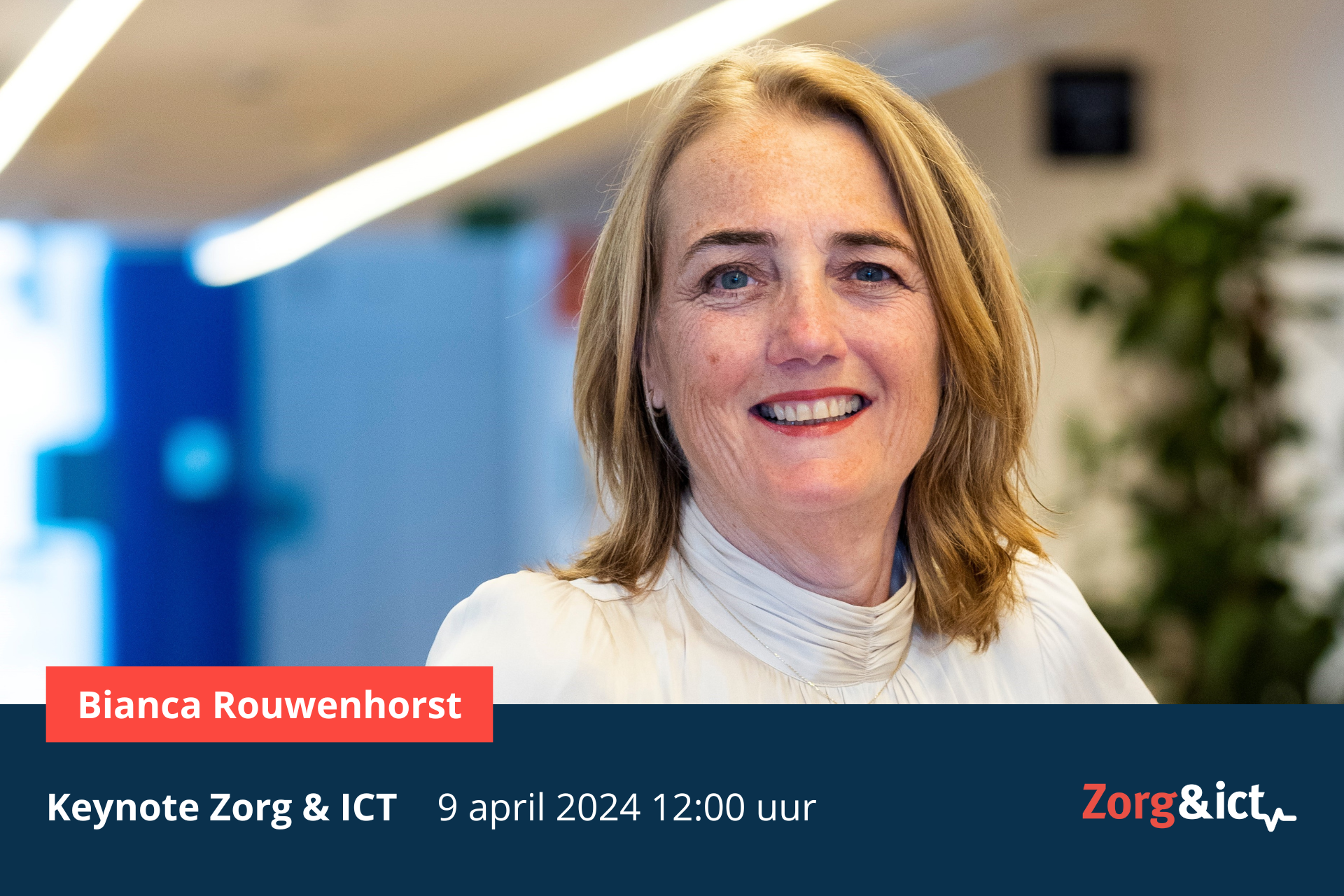The signatories of the Integral Care Agreement (IZA) have chosen CumuluZ as the target architecture for digital data exchange in healthcare. In a joint implementation agreement, the parties made binding agreements on this on Jan. 22. The signing brings a national, public facility for digital data exchange and data availability a big step closer.
"In the implementation agreement, we agreed to embrace the Cumuluz concept as the guiding framework for a nationwide network," says Bianca Rouwenhorst, director of information policy at the Ministry of Health, Welfare and Sport. "So basically a nationwide data integration infrastructure." The agreement also contains agreements on unity of language and generic functions around authentication and authorization, among other things. A sum of 1.4 billion euros has been set aside for the implementation of all this."
Bianca Rouwenhorst is one of the keynote speakers at Zorg & ict from April 9 to 11. Data availability is a core theme there alongside, for example, AI, remote care, cybersecurity and virtual reality. On April 9, data availability is also the central theme on the mainstage. Mark van Houdenhoven will also climb the stage, as will Mark Janssen who will share his experiences with CumuluZ in teaching hospitals. Don't miss out and register for free here.
Data availability
On its own website, the developers describe CumuluZ as a nationwide data availability network. "The CumuluZ platform ensures that all health data is system-independently available to healthcare provider and patient. CumuluZ does not compete with existing national healthcare IT initiatives, but rather complements them. The network aims to reuse components of these initiatives."
Utility
To ensure this openness, CumuluZ was thought of as a utility-like facility, including some form of public ownership. "It's about a basic infrastructure that should be there. So it has to be non-competitive," Rouwenhorst explains. "CumuluZ parties believe that the platform should be further developed, managed and operated under the direction of VWS."
National interest
Because CumuluZ was developed by the joint teaching hospitals, it feels to some parties like someone else's toy, which they now have to use unasked. "We're actually making it more public, so that it's no longer one person's baby," Rouwenhorst responds. "That's the beauty of the implementation agreement. In it, the parties say: we think it's of national importance that we make choices. For one facility we will choose something developed at the hospitals, for another possibly something that is already working in the VVT sector. We have chosen the locomotive and we know the end point. Now we are going to see which carriages we can hang on to it."
Historical step data availability
The implementation agreement can safely be called a historic step. With the choice of CumuluZ and a few other generic facilities, for the first time since the failure of the national Electronic Patient Record (EHR) in 2011, there is concrete sight of an instrument with which health data can be made available anytime and anywhere. This has a huge positive impact on data availability.
Network Care
After the EPD debacle, VWS was sidelined and the field had to figure out for itself how to proceed with digitization of healthcare. Result: fragmentation and endless point solutions that don't fit together. "We learned that blooming a thousand flowers might produce a beautiful field of flowers, but not the bouquet we prefer to have on the table," Rouwenhorst summarized this period.
"What has been done in different sectors in recent years has been mostly from the silo point of view. We are now moving toward networked care organized around the citizen, which means doing and number of basic things across sectors together."
IZA
This awareness, according to Rouwenhorst, has also gradually grown among the health care parties. The sense of urgency is reinforced by the IZA. In order to keep healthcare accessible, affordable and of high quality, it includes an ambitious digital agenda. It can only be implemented if all parties join forces.
Directed
Yet this does not mean spontaneous consensus on all points. On those points, the Ministry of Health, Welfare and Sport has taken control. According to Rouwenhorst, in doing so, VWS has done no more than heed the growing call from the field. "Initially it was quite difficult to figure out what direction means in a field in which parties themselves are responsible for the implementation and support of their own processes."
"From the Ministry of Health, Welfare and Sport, we started working out how we could take the lead. We did that initially by writing a National Vision with a corresponding strategy. Then the next question is: how will you ensure that these choices are respected and implemented without there being an immediate legal basis for them. That's why the implementation agreement is such a great step. IZA parties themselves came up with the suggestion to lay down choices in a joint implementation agreement."
Beyond non-commitment
"With that, the non-commitment is gone. It is now clear that you have to choose and that this has consequences. We say: this will be the facility that all parties will use. Sometimes that is a different facility than the one already used in a sector. That doesn't mean it's always fine for everyone. We will consider how quickly a party or sector can move to the new situation. It all doesn't have to be realized within one or two years. It's all about that dot on the horizon of 2035. But still, speed is of the essence."
Data not a revenue model
For IT vendors, choosing CumuluZ could have far-reaching consequences. Currently, vendors still try to put away their own solutions for data exchange. A supplier like ChipSoft -market leader in the Netherlands in the field of EPDs- emphatically positions its own Healthcare Platform as such. Consulting firm KPMG and MicroSoft recently launched their own solution for regional data exchange. "As long as no binding choices have been made for certain features, vendors are looking for opportunities to expand the market for their product," Rouwenhorst says. "That's what you see here. But even as we opt for a public data integration structure, vendors continue to play an important role in the transformation."
Whatever role vendors take on, the rule of thumb, as far as Rouwenhorst is concerned, is to separate data and functionality. "Otherwise data becomes the revenue model, it shouldn't be that."
Trust
For all the possible short-term effects of the implementation agreement, Rouwenhorst emphasizes that digital data exchange throughout healthcare is a long-term issue. "This is a journey that really takes another decade," Rouwenhorst states. "Many technical and legal issues still need to be sorted out, but the biggest challenge is in gaining trust. Both citizens and healthcare providers must dare to trust data and the way it is handled. When it comes to data quality and security, you can only do it right once. My approach is therefore: take one step at a time and learn from those steps. We no longer need to spend years thinking first which actually causes us to fall behind again when we take action."
Data availability is one of the core themes during Zorg & ict 2024. The largest health tech event in the Netherlands will be held from April 9 to 11 at Jaarbeurs in Utrecht. Bianca Rouwenhorst is one of the keynotes on the mainstage. Register for free here.












